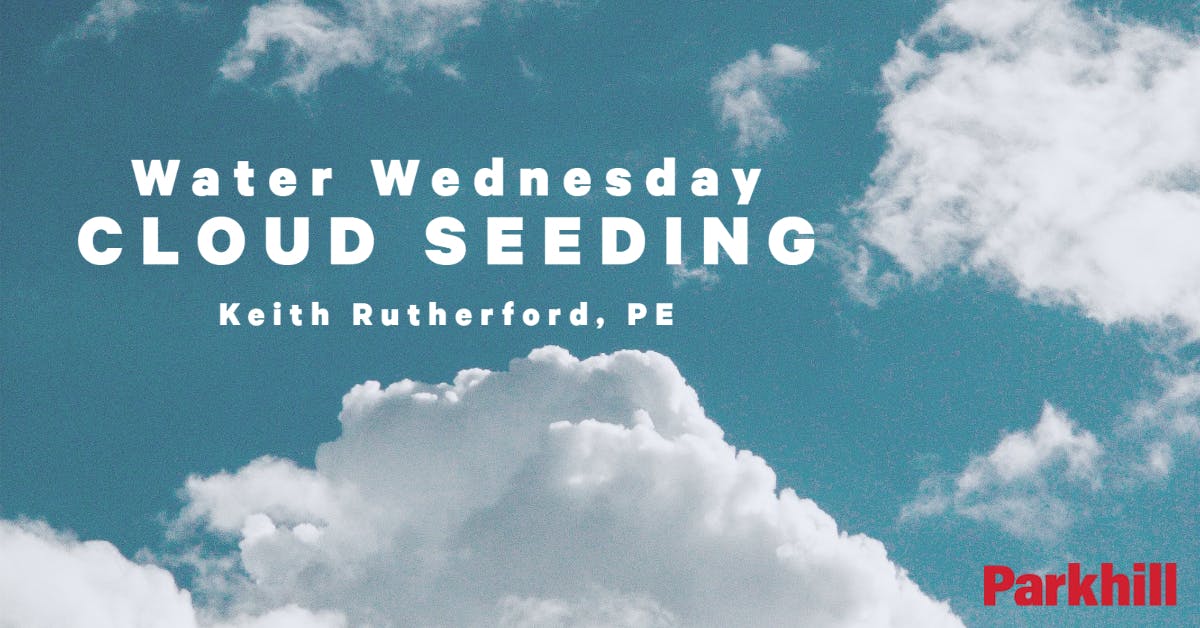Water Wednesday – Cloud Seeding
Category: Engineering
Written By: Keith Rutherford
Date: May 26, 2021

 Keith Rutherford, PE, is a Principal and a Senior Project Manager for Parkhill’s Treatment Practice. As an expert in hydraulics, pipelines, and pumping systems, he publishes a series of Water Wednesday blogs for Parkhill employees. He has served as president of the local chapter for the American Society of Civil Engineers (ASCE), vice president – technical for the Texas section of ASCE, and as a project advisory committee member for the Water Reuse Foundation.
Keith Rutherford, PE, is a Principal and a Senior Project Manager for Parkhill’s Treatment Practice. As an expert in hydraulics, pipelines, and pumping systems, he publishes a series of Water Wednesday blogs for Parkhill employees. He has served as president of the local chapter for the American Society of Civil Engineers (ASCE), vice president – technical for the Texas section of ASCE, and as a project advisory committee member for the Water Reuse Foundation.
Cloud seeding to ward off the drought… Will it work?
We have looked at options to enhance the availability of water through reuse and conservation but what about weather modification? Can we (humans) become rainmakers?
The process of cloud seeding has been around since the 1940s and has many different uses besides making rain. Insurance companies have contributed funding to cloud seeding efforts to reduce the size of hailstones by causing them to drop before they can gain size. Vineyard owners have participated in cloud seeding for the same reason to prevent damage to crops.
As far as helping with the drought, dry weather typically comes with clear blue skies. You can’t seed clouds if there are not any clouds to seed, so how can this help? Like most things in life, planning ahead is key to success. Much of the surface water is the result of snowmelt in higher elevations. Limited snowfall makes surface water scarce. Seeding clouds in the winter to promote larger snowfalls is one way to reclaim atmospheric moisture for drinking water use.
Research on cloud seeding has been going on since it was introduced but until recently, there was not quantitative proof of how well it works. With the Drought Monitor showing 40 percent of the United States in severe drought, many states have started looking to cloud seeding as a way to help deal with the drought.
If cloud seeding isn't successful, the one sure way to make it rain is to wash your car!!
This video explains cloud seeding and provides more information on its efficacy:


